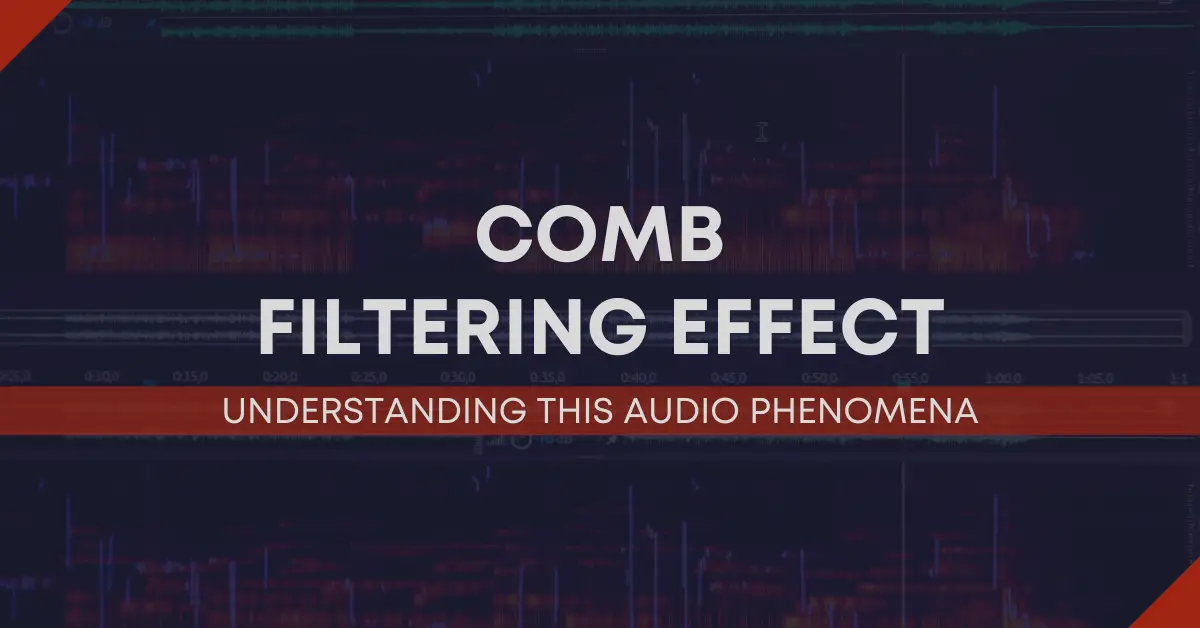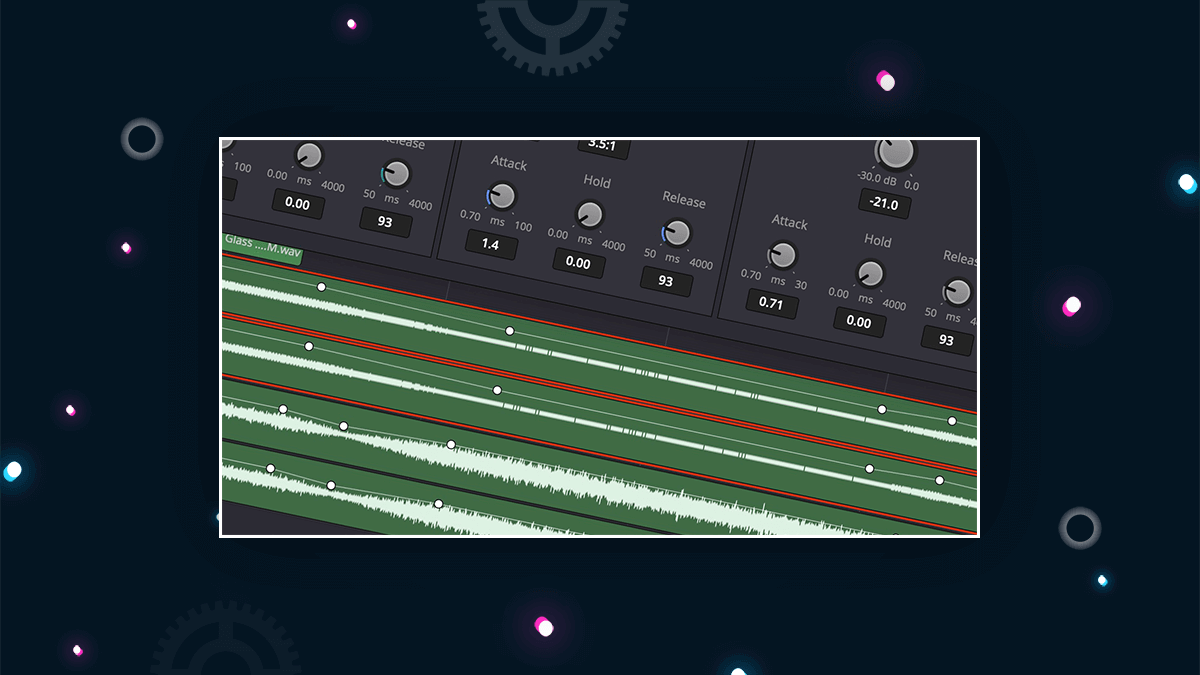Understanding Audio Comb Filtering: A Guide to the Top Digital Audio Workstations
Music lovers often encounter audio comb filtering, an undesirable artifact that can significantly impact the quality of their recordings and mixes. Understanding how to identify and mitigate this effect is crucial for achieving professional-sounding results. Readers at theautonomics.com will find this guide invaluable, providing practical advice and assistance in choosing the right digital audio workstation (DAW) for effectively tackling comb filtering. This article explores the top digital audio workstations for audio comb filtering, highlighting their strengths and weaknesses in this specific area.
Explore
- 1 Identifying and Understanding Audio Comb Filtering
- 2 The Impact of Comb Filtering on Audio Quality
- 3 Top Digital Audio Workstations for Audio Comb Filtering: A Comparative Analysis
- 4 Advanced Techniques for Comb Filtering Mitigation within Your Chosen DAW
- 5 Choosing the Right DAW for Your Needs
- 6 Mastering Audio Comb Filtering: A Continuous Learning Process
- 7 Final Thoughts on Top Digital Audio Workstations for Audio Comb Filtering
Identifying and Understanding Audio Comb Filtering
Audio comb filtering is a phenomenon that creates a resonant, metallic, or "comb-like" sound in audio. It occurs when two identical or nearly identical signals are summed together with a slight delay between them. This delay causes constructive and destructive interference, resulting in peaks and dips in the frequency response, similar to the teeth of a comb. The severity of comb filtering depends on the delay time and the frequency content of the original signal.
Smaller delay times create comb filtering with widely spaced notches, while larger delay times create more closely spaced notches. High-frequency signals are more susceptible to comb filtering than low-frequency signals.
Common causes of comb filtering include:
- Microphone placement too close to reflective surfaces (walls, floors, ceilings)
- Incorrect speaker placement in a listening environment
- Improper use of reverb or delay effects
- Multiple microphones picking up the same sound source with slightly different timing.

The Impact of Comb Filtering on Audio Quality
Comb filtering negatively impacts audio quality in several ways. It can make recordings sound muddy, harsh, or unnatural. The peaks and dips in the frequency response can mask certain frequencies, making instruments sound thin or lacking in body. It can also introduce a distracting metallic quality, detracting from the overall listening experience. For music lovers aiming for a polished and professional sound, understanding and addressing comb filtering is essential.
Top Digital Audio Workstations for Audio Comb Filtering: A Comparative Analysis
Choosing the right DAW can significantly impact your ability to identify and correct comb filtering. While all modern DAWs offer basic tools for spectral analysis and equalization, some offer more advanced features that streamline the process. Here’s a look at some of the top digital audio workstations for audio comb filtering:

Pro Tools
Pro Tools is a widely respected industry standard known for its powerful processing capabilities. Its spectral analysis tools, combined with its extensive EQ options, make it an excellent choice for identifying and correcting comb filtering. The ability to work with high sample rates and bit depths also minimizes the introduction of comb filtering during recording. Pro Tools’ strength lies in its precision and control, offering a sophisticated approach to audio manipulation. However, its steep learning curve and high cost might deter some users.
Logic Pro X
Logic Pro X, a Mac-exclusive DAW, provides a comprehensive suite of tools for managing comb filtering. Its visual EQ and spectral display tools provide clear insights into the frequency response, making it easy to pinpoint problematic areas. The extensive plugin library also includes many high-quality EQs and reverbs, facilitating effective correction. Logic Pro X offers a balance between power and user-friendliness, making it a strong contender among the top digital audio workstations for audio comb filtering.
Ableton Live

Ableton Live is known for its intuitive workflow and powerful arrangement features. While not as traditionally focused on audio post-production as Pro Tools, Live’s spectral analysis capabilities, coupled with its robust EQ and effects processing, allow for effective comb filter management. Its session view also helps visualize audio timing, aiding in identifying potential comb filtering issues at the source. Ableton Live’s strength lies in its adaptability and versatility, making it a suitable choice for those who value flexibility.
Steinberg Cubase
Cubase, another veteran in the DAW world, provides a solid foundation for managing comb filtering. Its sophisticated metering and analysis tools offer detailed insights into the frequency response, allowing for precision in equalization. Its comprehensive plugin collection and integration with VST plugins offer a wide range of tools for audio manipulation. Cubase is a powerful tool that excels in precision but may have a steeper learning curve compared to some other DAWs on this list.
Studio One
Studio One has gained popularity for its user-friendly interface and powerful features. While maybe not as feature-rich as some of the other DAWs, Studio One provides a streamlined workflow that is effective for tackling comb filtering. Its intuitive EQ and spectral analysis tools, along with its excellent drag-and-drop functionality, make the process relatively straightforward. Studio One’s user-friendly approach makes it a great choice for those new to audio engineering.
Reaper
Reaper is a cost-effective option that punches above its weight in terms of features and performance. While its interface might appear less polished than others, Reaper boasts extensive customization options and a powerful set of built-in plugins for EQ and spectral analysis. Its flexibility and affordability make it a surprisingly strong contender among the top digital audio workstations for audio comb filtering, especially for budget-conscious music lovers.
Advanced Techniques for Comb Filtering Mitigation within Your Chosen DAW
Beyond the basic EQ and spectral analysis tools, advanced techniques can significantly improve comb filtering mitigation. These techniques are generally applicable across the top digital audio workstations for audio comb filtering mentioned above:
-
Phase Alignment: If the comb filtering is caused by two slightly out-of-phase signals, phase alignment plugins can help correct the timing discrepancies, reducing the comb filtering effect.
-
Multiband Compression: Using multiband compression allows for independent control of different frequency ranges, enabling precise gain adjustments to compensate for the peaks and dips caused by comb filtering.
-
Gating: In some cases, gating can be used to eliminate unwanted reflections that contribute to comb filtering.
-
Careful Mic Placement: The most effective method for preventing comb filtering is to carefully place microphones to minimize reflections. Experiment with microphone positioning and use absorbent materials to reduce reflections.
-
Surgical EQ: Precisely cutting out the offending frequencies using a surgical EQ can effectively reduce comb filtering. However, this should be done cautiously, to avoid negatively impacting the overall sonic character of the audio.
Choosing the Right DAW for Your Needs
The choice of the best DAW for audio comb filtering ultimately depends on individual needs and preferences. Each of the top digital audio workstations for audio comb filtering listed offers a unique set of strengths and weaknesses. Consider factors such as budget, operating system compatibility, user-friendliness, and the specific features required for your workflow. It’s often beneficial to try out free trial versions of different DAWs to determine which one best suits your needs and provides the most intuitive and effective comb filtering management tools.
Mastering Audio Comb Filtering: A Continuous Learning Process
Mastering audio comb filtering is an ongoing journey. Continuous learning and experimentation are key to developing effective strategies for identifying and mitigating this common audio problem. The top digital audio workstations for audio comb filtering offer the tools, but the skill lies in understanding how to use them effectively. By understanding the causes, effects, and mitigation techniques, music lovers can significantly improve the quality of their audio productions. The more experience you gain, the better equipped you’ll be to anticipate and avoid comb filtering in your projects.
Final Thoughts on Top Digital Audio Workstations for Audio Comb Filtering
While numerous DAWs exist, the ones highlighted in this article represent leading choices for effectively addressing audio comb filtering. Their advanced features, coupled with a solid understanding of audio principles, provide music lovers with the power to create professional-sounding recordings. Remember, prevention is always better than cure; careful microphone placement and recording techniques are paramount in minimizing comb filtering. However, the ability to effectively utilize the tools within your chosen DAW from the top digital audio workstations for audio comb filtering is crucial for achieving a polished and professional final product. The journey towards mastering audio production involves continuous learning and refinement, and understanding comb filtering is a vital step in that process. Ultimately, the best DAW for you will be the one that integrates best into your workflow and empowers you to achieve your creative vision.
